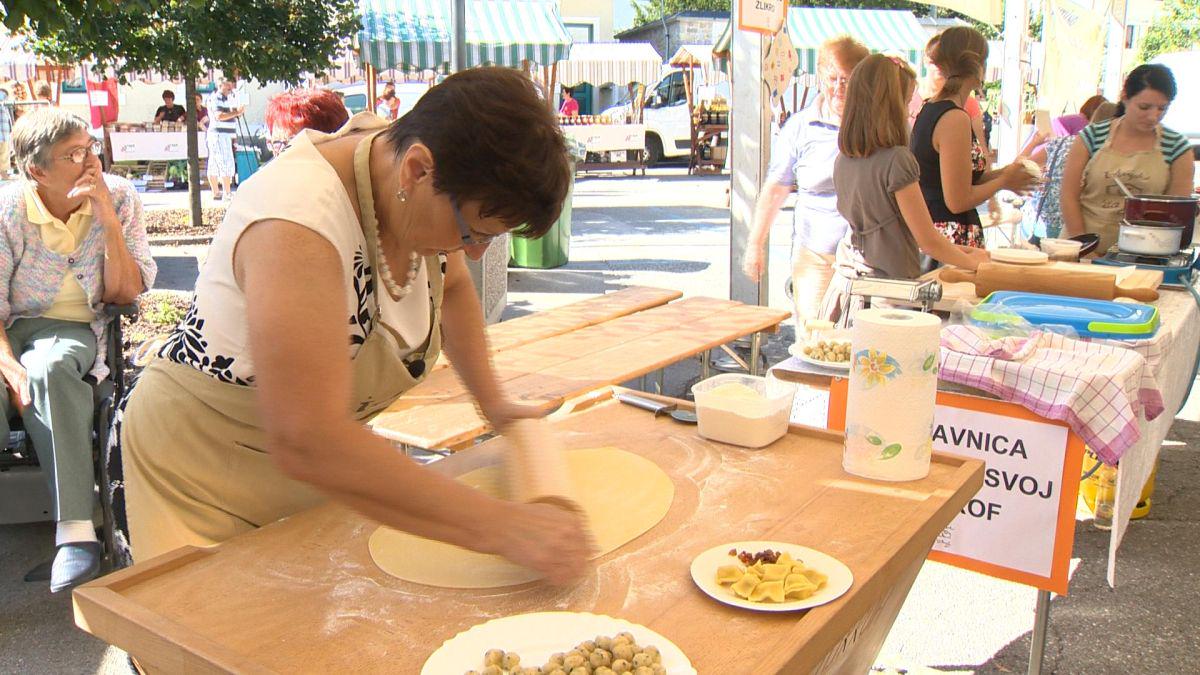Known as idrijski žlikrofi (Idrija dumplings), the ravioli-like pasta pouches are filled with potatoes, onions, bacon, chives, and marjoram, and traditionally served with meat, often lamb or rabbit.
The exact origin of žlikrofi remains a mystery, but according to written sources, they were already common in the 19th century. Idrija has always had a large population of outsiders, and some say that žlikrofi were brought in from Hungary, while others believe that they were the local variation of a Viennese dish. Whatever their roots, they proved an ideal, simple-to-prepare Sunday meal for hungry miners, and the recipe for žlikrofi was passed down from one generation to another.
After World War II, žlikrofi were popularized by an Idrija restaurant known as Nebesa, or "Heaven". Long before the current trend for authentic regional dishes, the restaurant's owner, Franc Lapanja, decided to offer žlikrofi to his guests. What had once been a dish eaten only at home became a hit among his customers, and Nebesa quickly emerged a most-stop for many visitors to Idrija.
Nebesa no longer exists, but žlikrofi are now a staple at restaurants in Idrija and beyond. They are now also available frozen in supermarkets and are enjoyed by more people than ever before. Their status as a regional specialty was recognized by the Slovenian government in 2002 and by the European Commission in 2010, making them the first Slovenian product recognized as a "Traditional Specialty" on the European level. Long after the closure of Idrija's famous mercury mines, žlikrofi remind Slovenians and visitors alike about the unique history of this mining town in western Slovenia.
Jaka Bartolj


































































